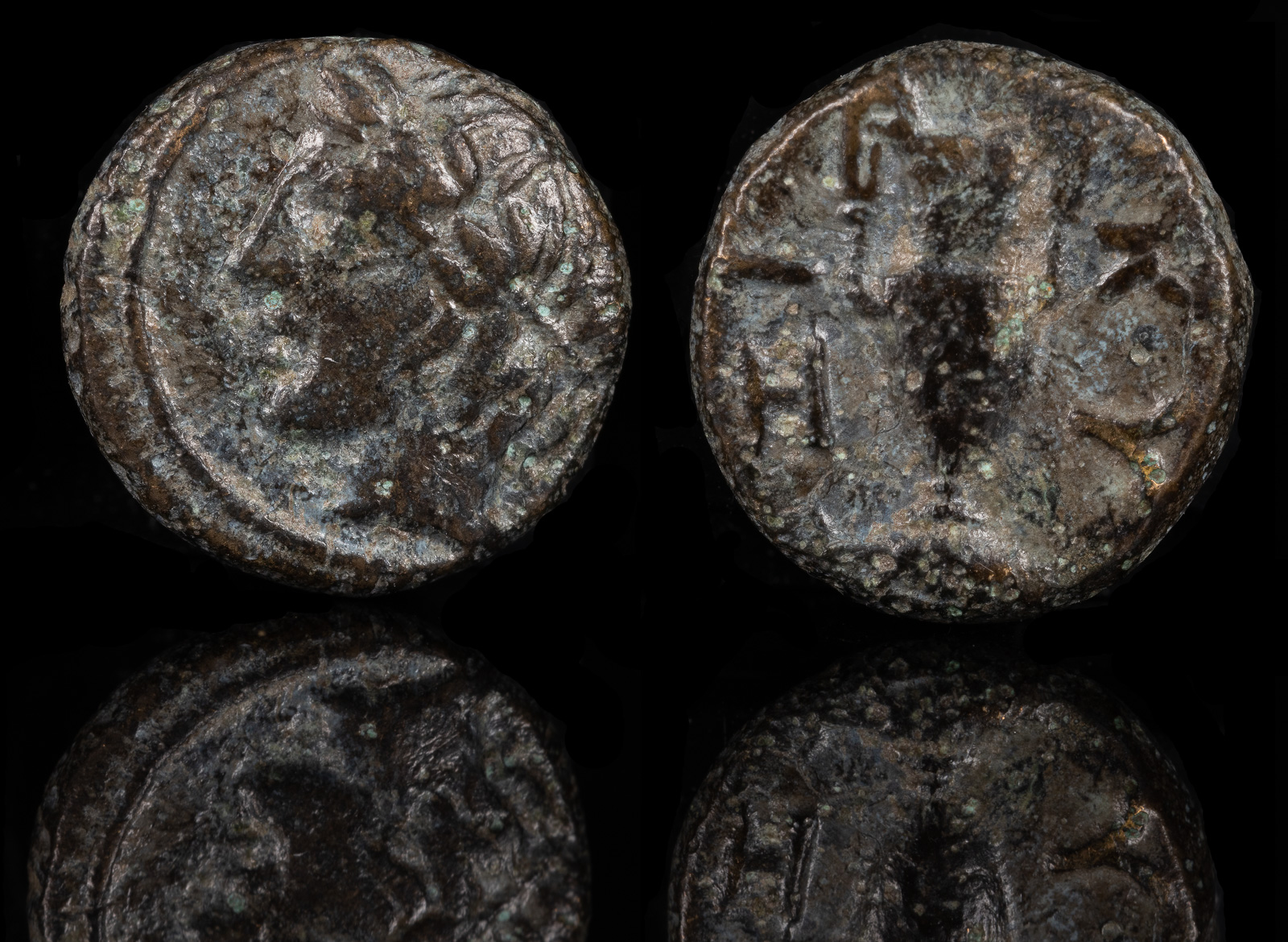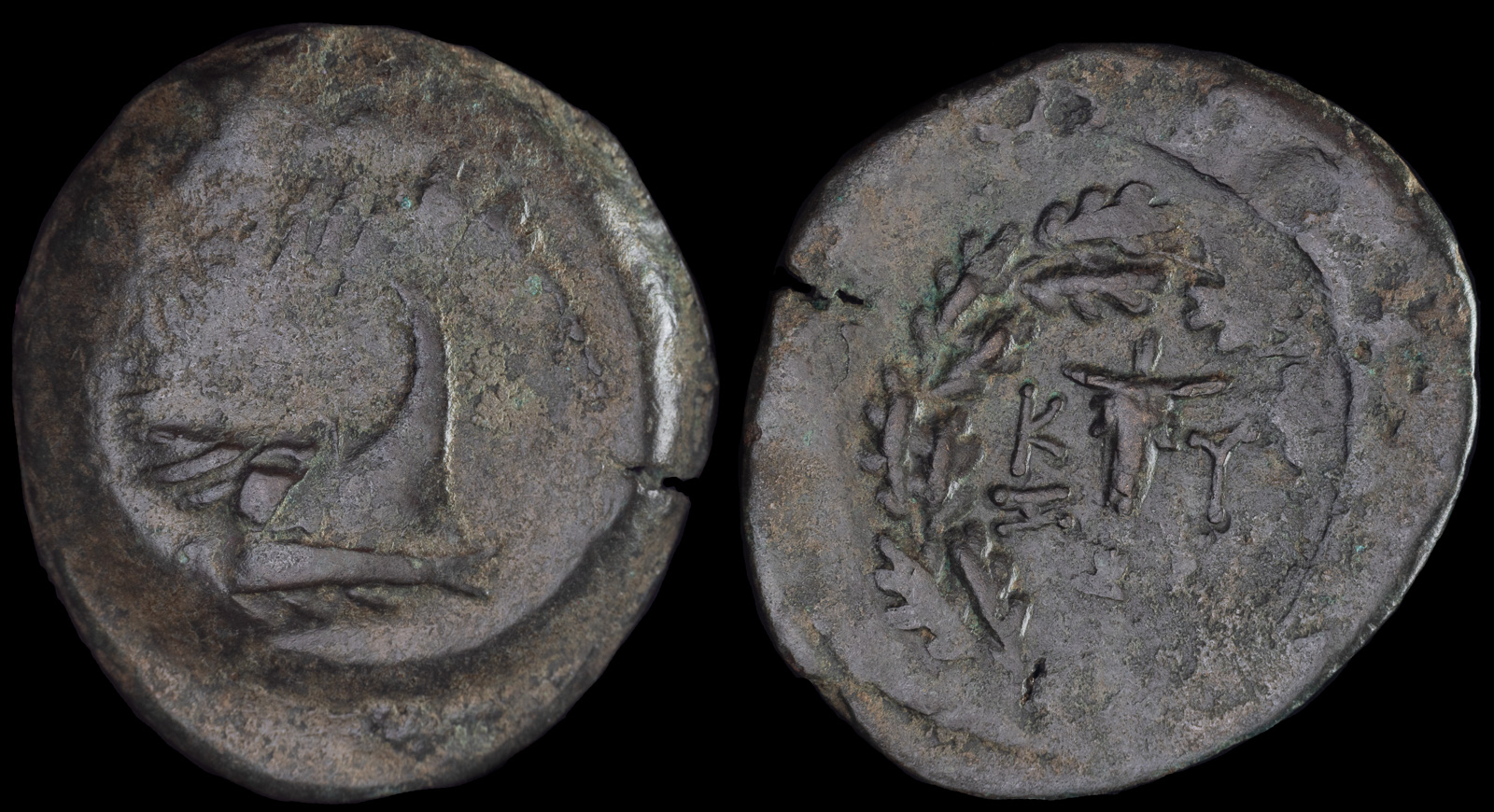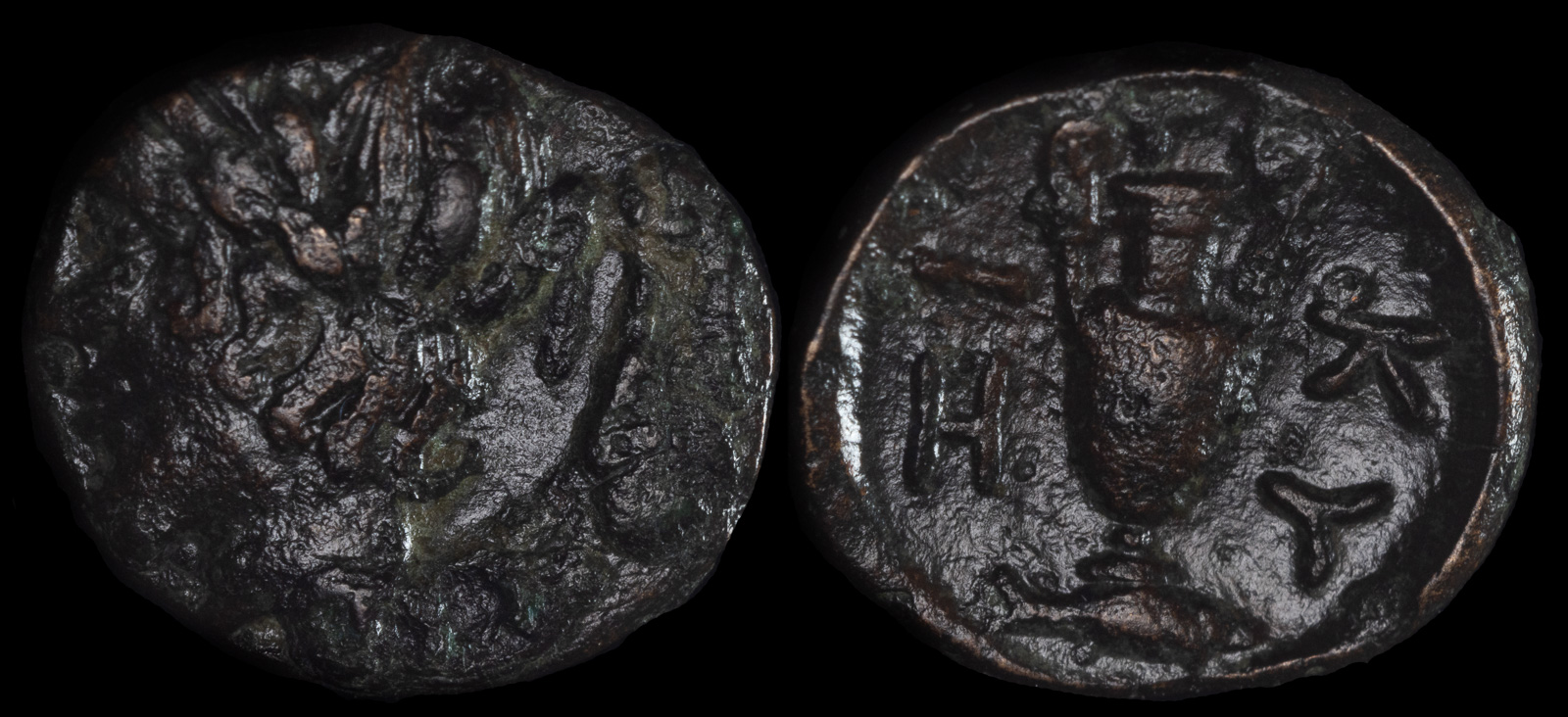
Mysia, Kyzikos
c. 4th century BCE
Æ 8mm, 0.88g, 9h
Laureate head of Apollo l.
R/ Amphora; below, tunny r.
Von Fritze III 2; SNG BnF 411; SNG Copenhagen 57
Kyzikos was famous numismatically for creating its electrum staters in the archaic era. These can be very pricy, so I don’t have one, though I do have this nice bronze coin.
According to mythology, Kyzikos was founded during the coming of the argonauts, though archeologists believe it more likely that it was settlers from Thessaly. Later, more settlers from Miletos joined them.

Mysia, Kyzikos
circa 300-200 BCE
Overstruck on an earlier issue from Kyzikos (SNG Paris 436)
Æ 31mm, 15,82g
Prow to right /
Bucranium; K-Y/Z-I across fields; all within oak wreath
Von Fritze III, 11; SNG BnF 438; SNG von Aulock 1231
The famed philosopher Eudoxos of Knidos, who was a student of Plato, established a school in Kyzikos. He was responsible for much of the mathematics of concentric spheres, and was among the first to establish the trajectories of the planets. He also made other contributions to mathematics and is today honored by craters on the moon and Mars along with an algebraic curve.

Mysia, Kyzikos
circa 350-300 BCE
Æ 10mm, 0,69g
Laureate head of Apollo left /
KY-Z (like H) I Amphora; tunny below
Von Fritze, Nomisma X, Kyzikos, Gruppe I-2, Tafel I-3; SNG Copenhagen 57
The city swayed between Spartan and Athenian dominance until it came under the possession of the Persians. In 334 BCE, Alexander the Great liberated it and connected it to the mainland. Some time after his death, Kyzikos came under the dominion of the Attalids of Pergamon, where it remained until Roman times.

Mysia. Kyzikos
circa 300-200 BCE
Æ 11mm, 1,16g
Obv: Head of Kore Soteira right.
Rev: KY – ZI, Tripod.
Nomisma X 1; SNG BN 43
I’m uncertain whether this coin comes from Kyzikos. It bears resamblance to their types, though the ethnic is a poor match.

Mysia, Kyzikos
circa 300-100 BCE
Æ 20mm, 6,24g
Laureate head of Kore-Soteira to right /
B between KY-ΣI above and below; all within wreath
Von Fritze III
Kyzikos receives colonies from Miletos.
Additional settlers from Miletos migrate to Kyzikos.
An Athenian fleet under Alkibiades, Thrasybulos, and Theramenes defeats the Spartans at the Battle of Kyzikos. Afterwards, Sparta offers peace but is rejected.
Peace of Antalkidas, arranged by Artaxerxes II, is signed in Susa, ending the Corinthian War. Abydos, Aigai, Kalchedon, Kaunos, Klazomenai, Kyzikos, Parion, Samos, and Adramytteion become part of the Persian Empire.
Memnon of Rhodes is tasked by Darius III with taking Kyzikos and nearly does. It is defended by Kalas.
Alexander the Great captures Kyzikos and commissions the effort to connect it to the mainland.
Arrhidaios, the governor of Hellespontine Phrygia, besieges Kyzikos, who are under Antigonos Monophthalmos.
Philetairos provides food and aid to Kyzikos against invading Gauls.
Kyzikos is defended by the Romans against a siege by Mithridates VI.
Hadrian puts plans into place to complete the Temple of Zeus at Kyzikos.
An earthquake destroys Kyzikos, including the newly built Temple to Hadrian. Funds for its rebuilding are allocated by Antoninus Pius.